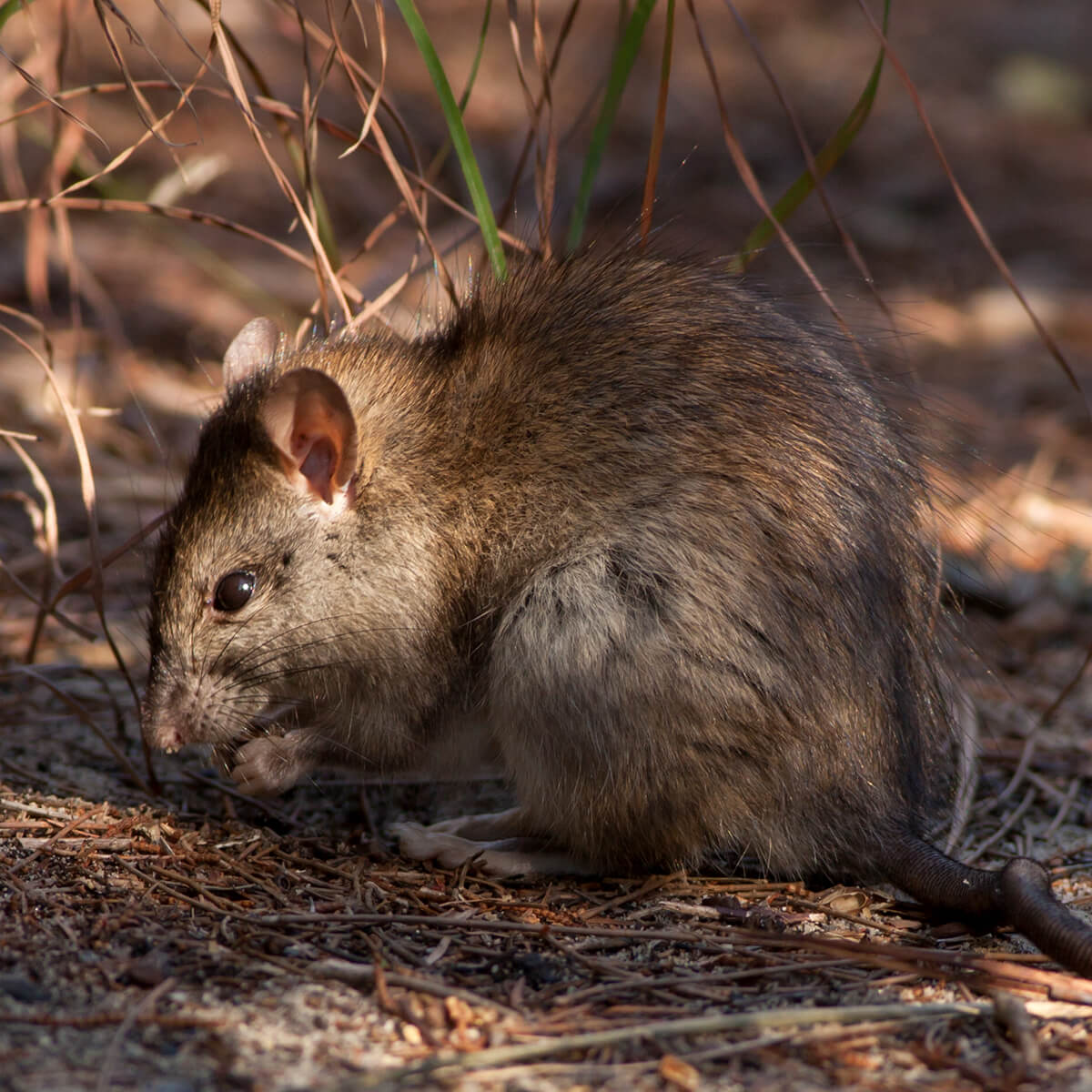Bush Rat
The Bush rat (Rattus fuscipes) is an Australian native rat. It’s a small, nocturnal animal that nests in dense forests away from cities. Due to its habitat preferences, the bush rat is not that easy to find. In this article, you will get to know the most important facts about the bush rat that will help you identify and understand this species behaviour.
Bush rat characteristics

- Scientific name: Rattus fuscipes
- Colour: Grey-brown to red-brown, pale grey underneath
- Size: From 150mm to 210mm in length (without tail)
- Tail length: 140mm to 200mm
- Weight: Around 120 grams
- Feeding habits: Omnivore
- Region: Mainly the coastline of New South Wales, Victoria, South and Western Australia, partially in Queensland.
How to identify a bush rat
The Bush rat has some specific features that can help you distinguish it from similar rats.
- It has pointed head and rounded ears.
- Its tail is smaller than the rat's body.
- Another key feature is their front teeth - they are chisel-shaped with hard yellow enamel.
Where does the bush rat live?
The bush rat prefer woodlands, forests and heath. The dense forests give it good shelter with plenty of rocks and logs to build its nest under. Since bush rats are not that good at climbing, it is less likely to find them in properties in urban areas. The bush rat has its predators in its living environment, such as dingoes, foxes, birds and even reptiles.
Bush rat's life cycle
- Bush rats can start to reproduce when around 4 months old.
- The bush rat has a considerably short life, which is around 18 months. This gives it limited time to reproduce, and, unlike other similar species, it manages to do it only once.
- The sizes of the bush rat's litter range from 4 to 5 babies. The breeding period normally starts around November.
- The gestation period, on the other hand, varies between 22 and 24 days.
- The mother takes care of the little ones for around 25 days after birth. Then, they become independent.
Damages by bush rats
- Bush rats can be a host for more parasites than any other rodent in Australian.
- This type of rat can feed on nectar without damaging the blossoms.
Check out: Diseases Caused by Rats